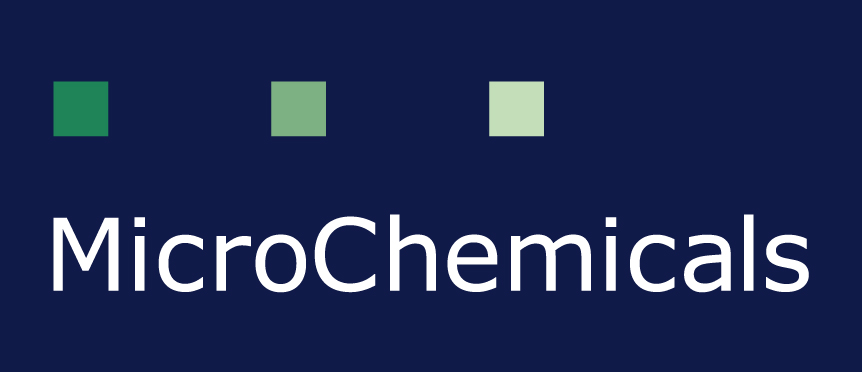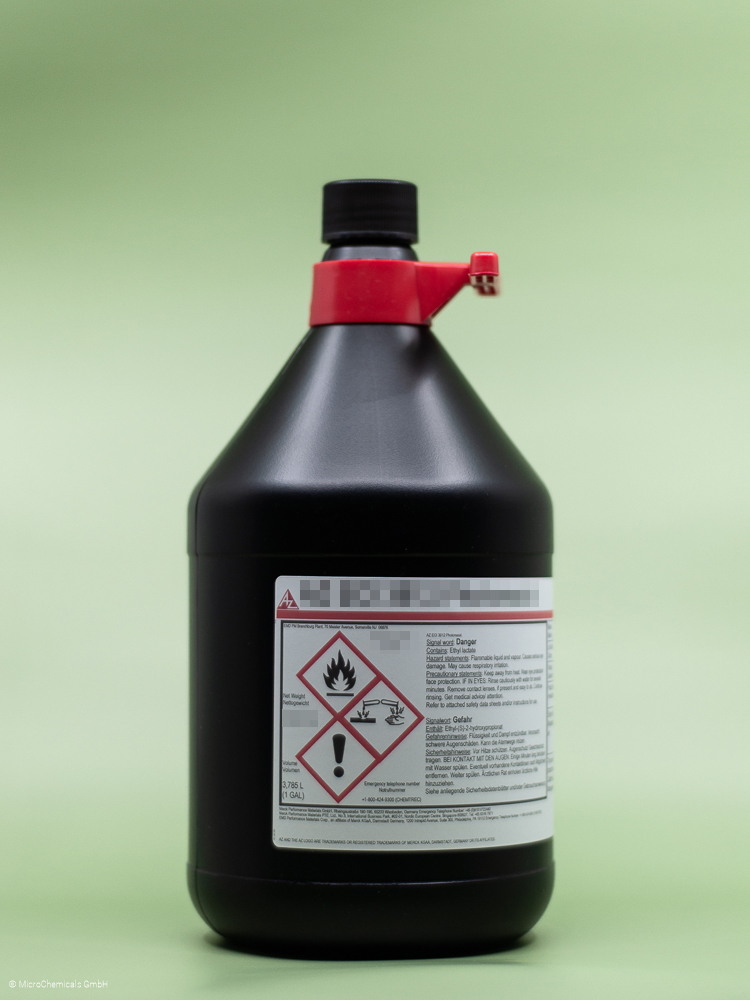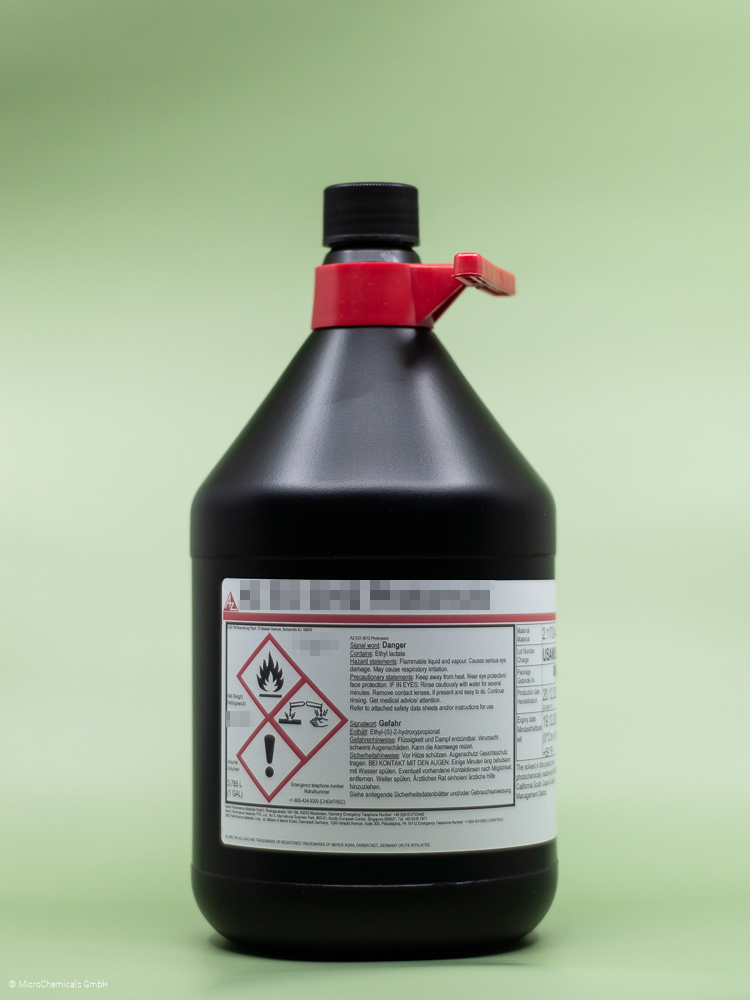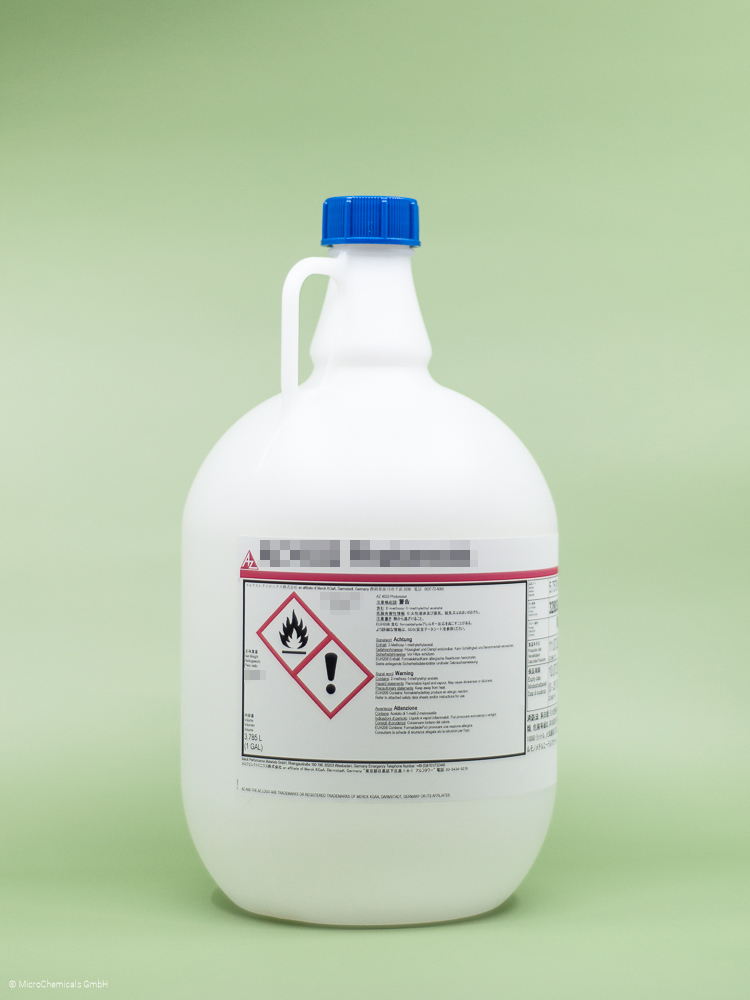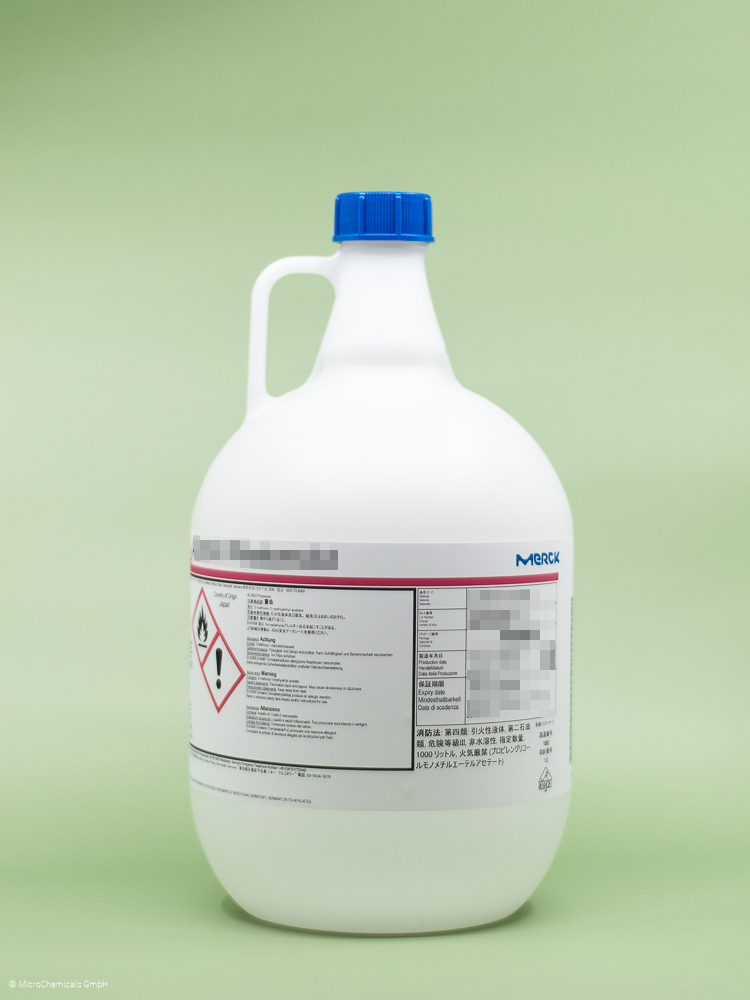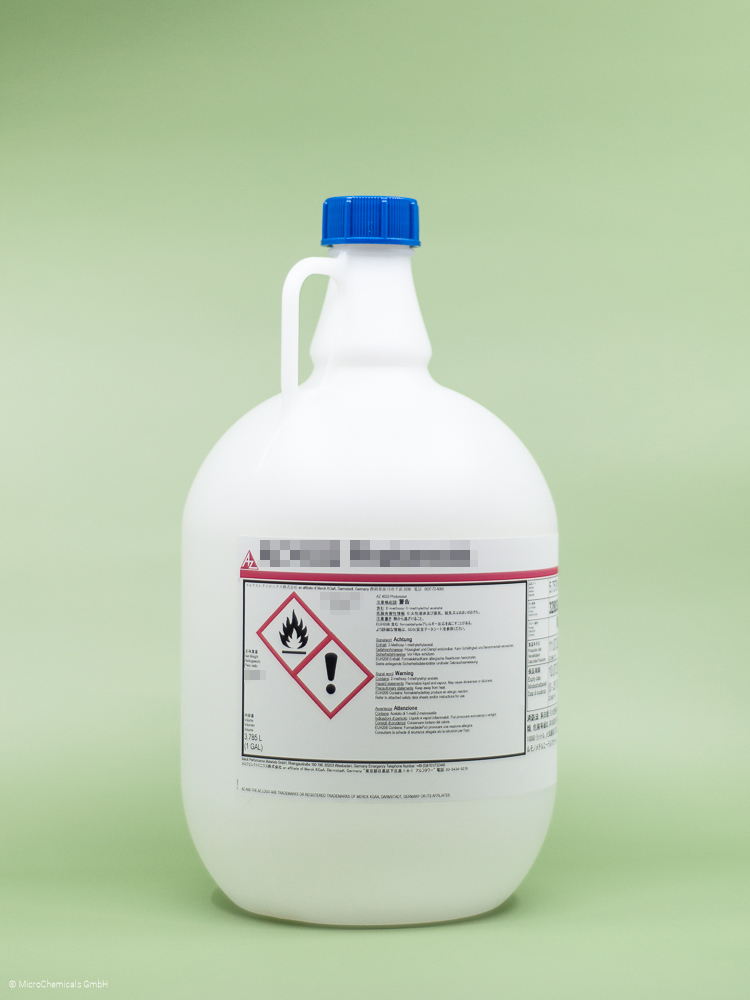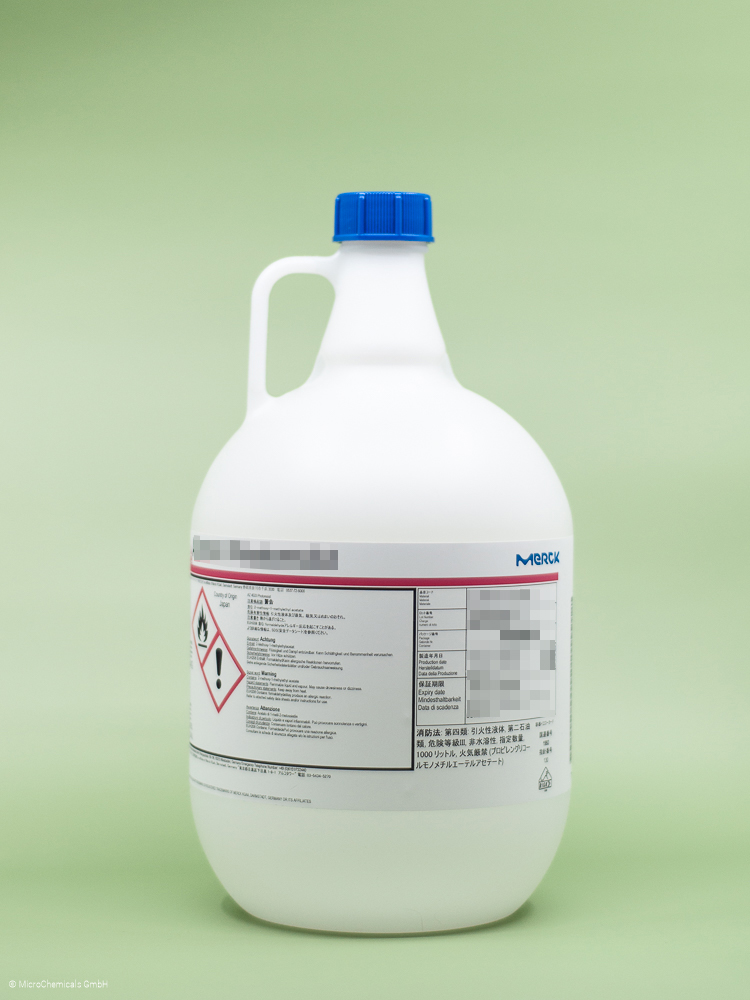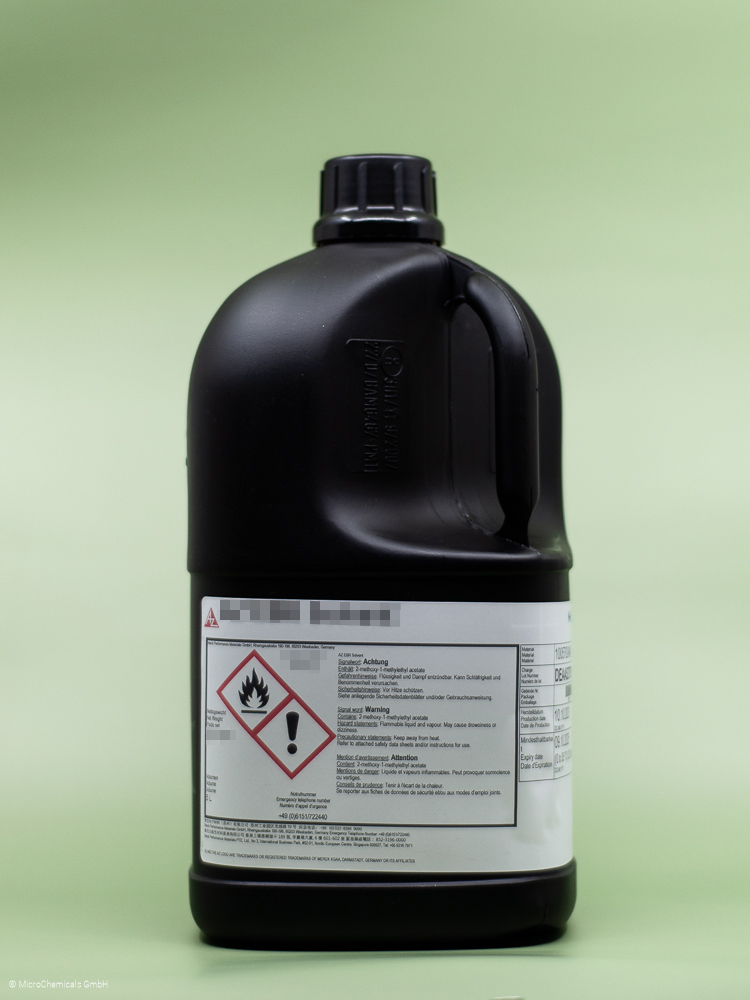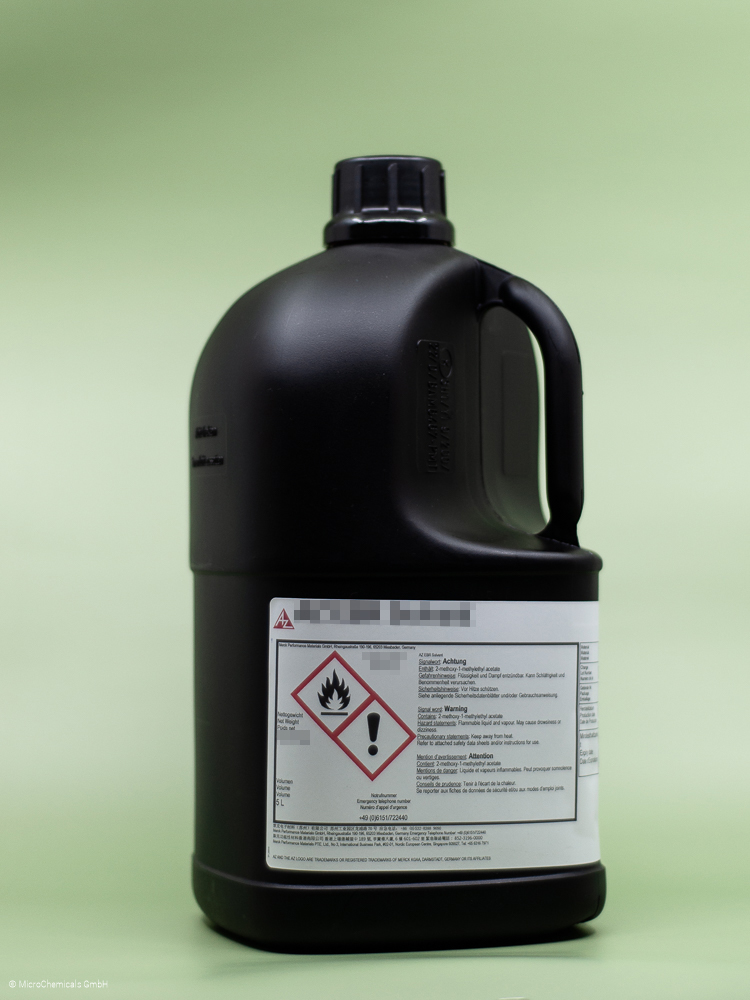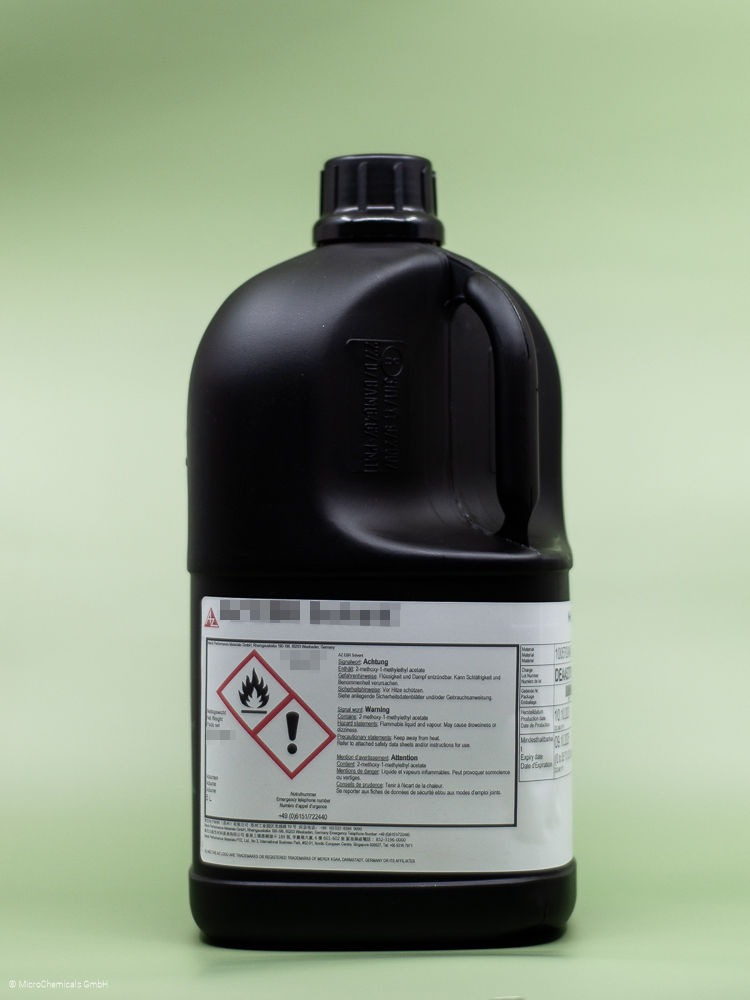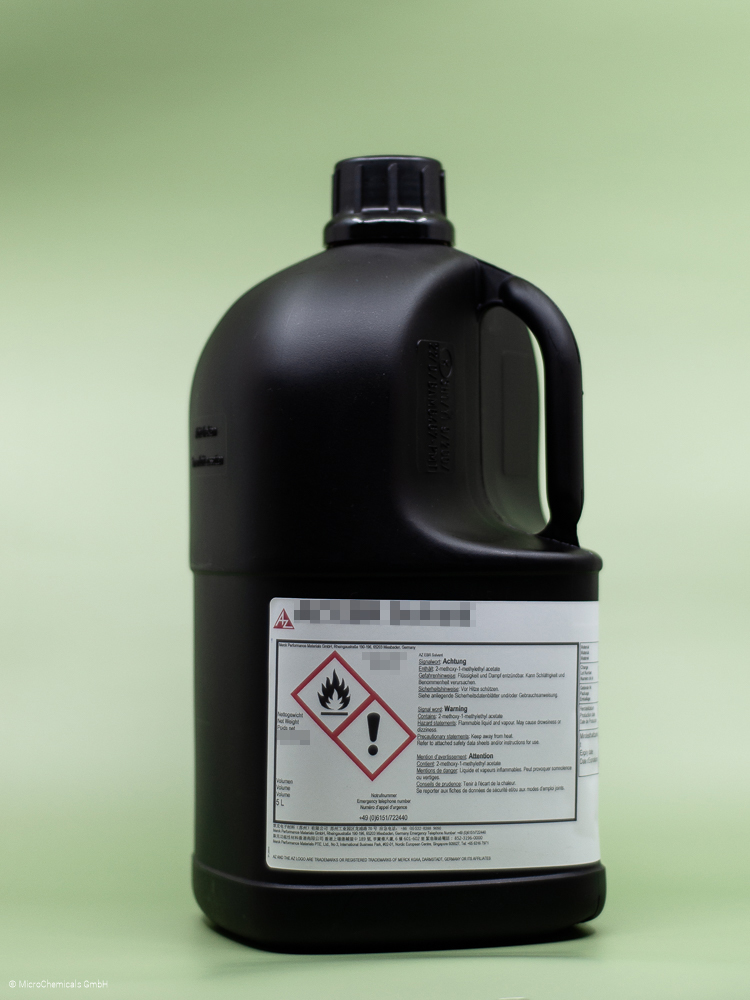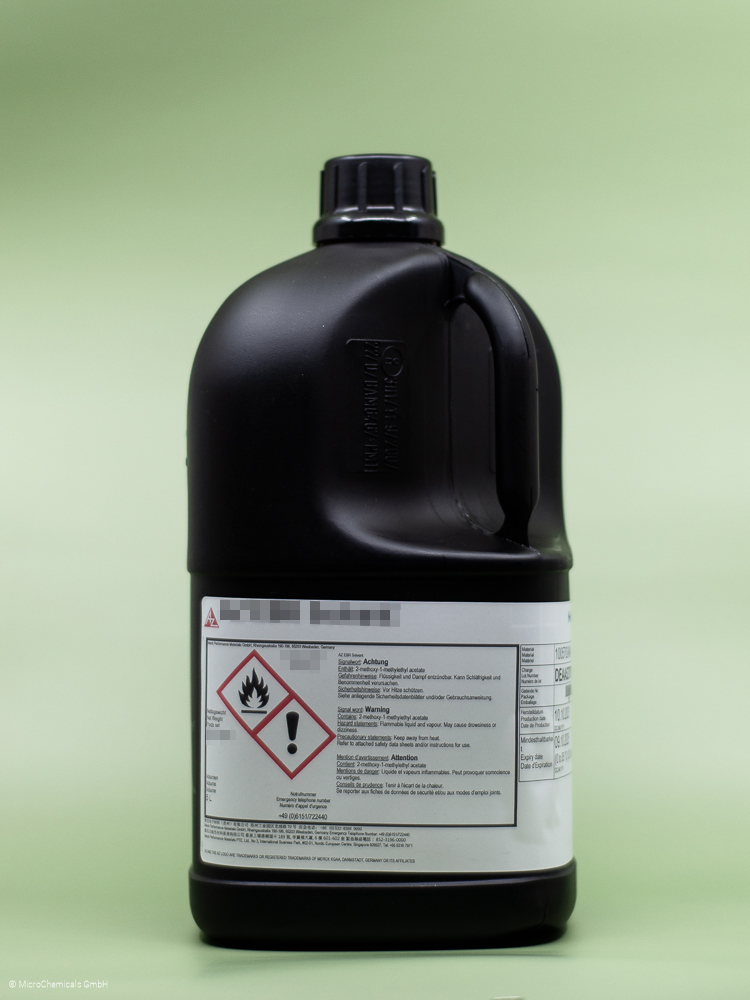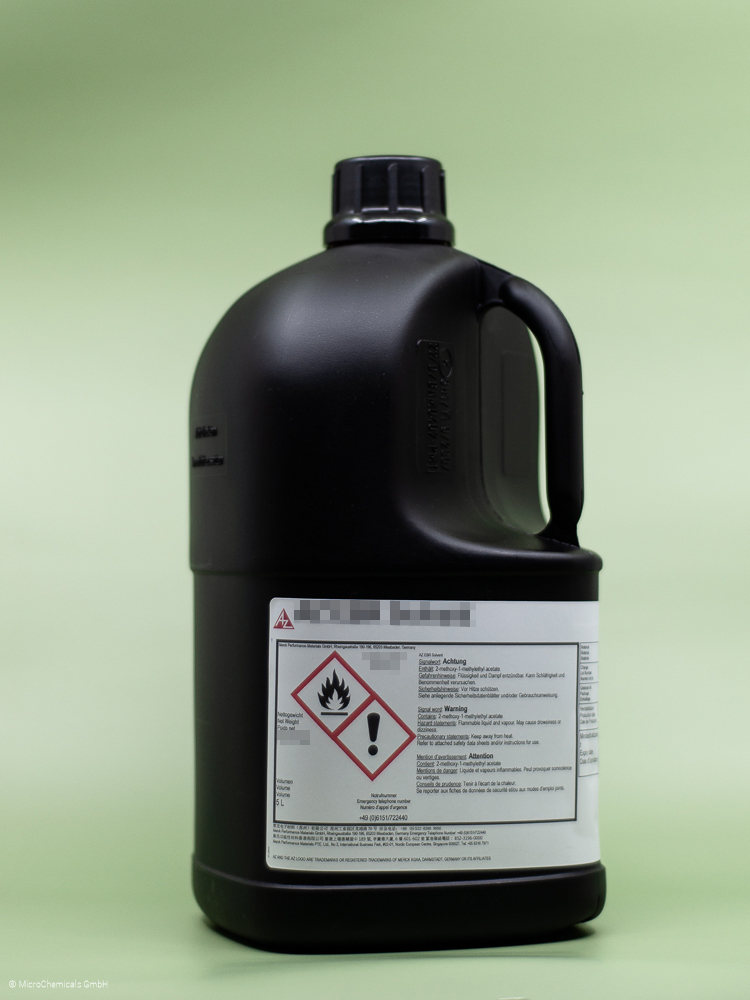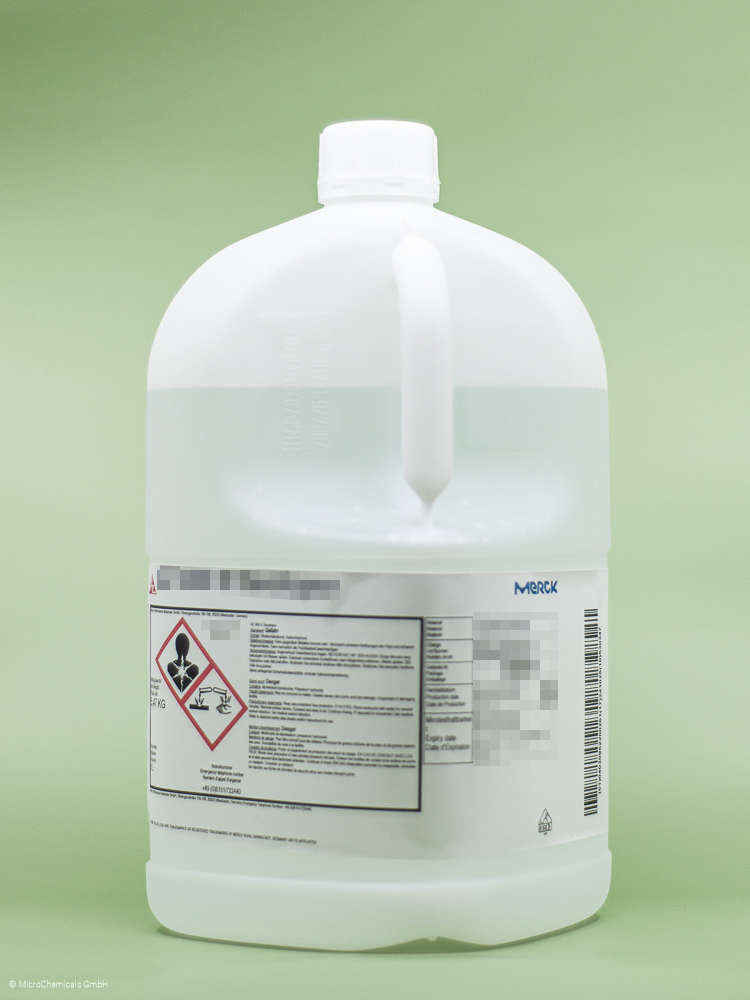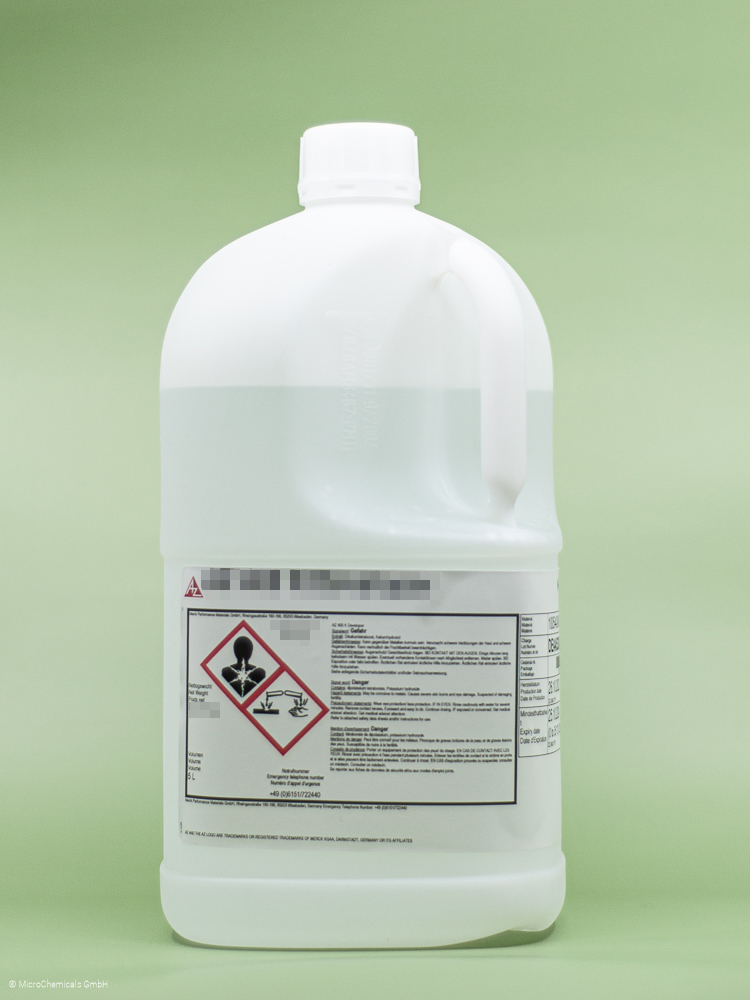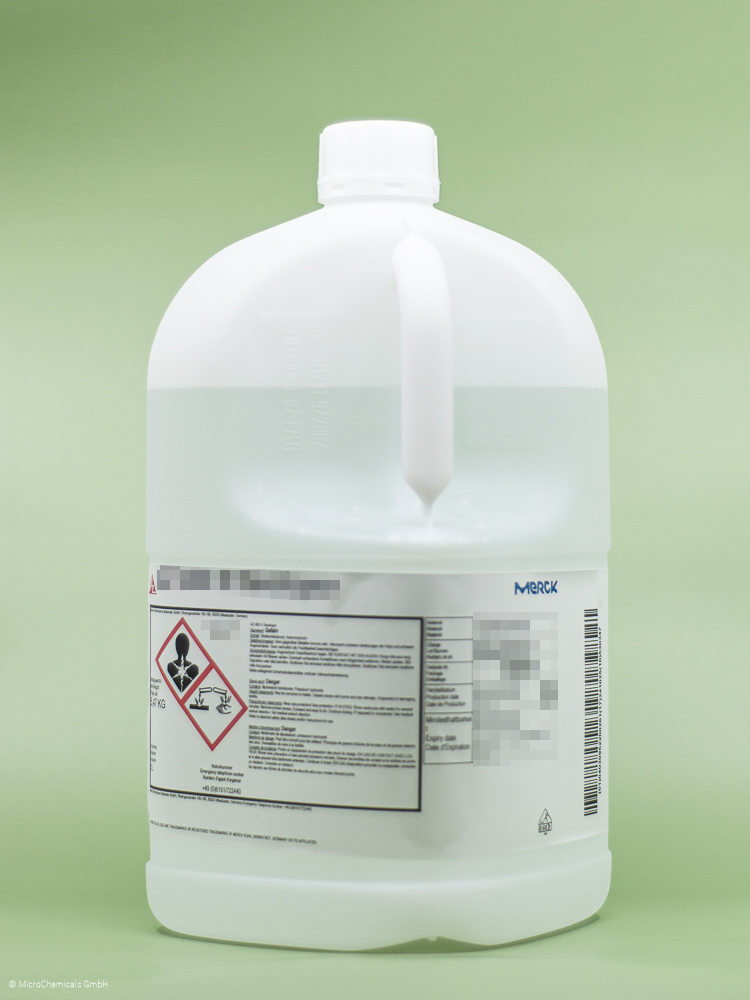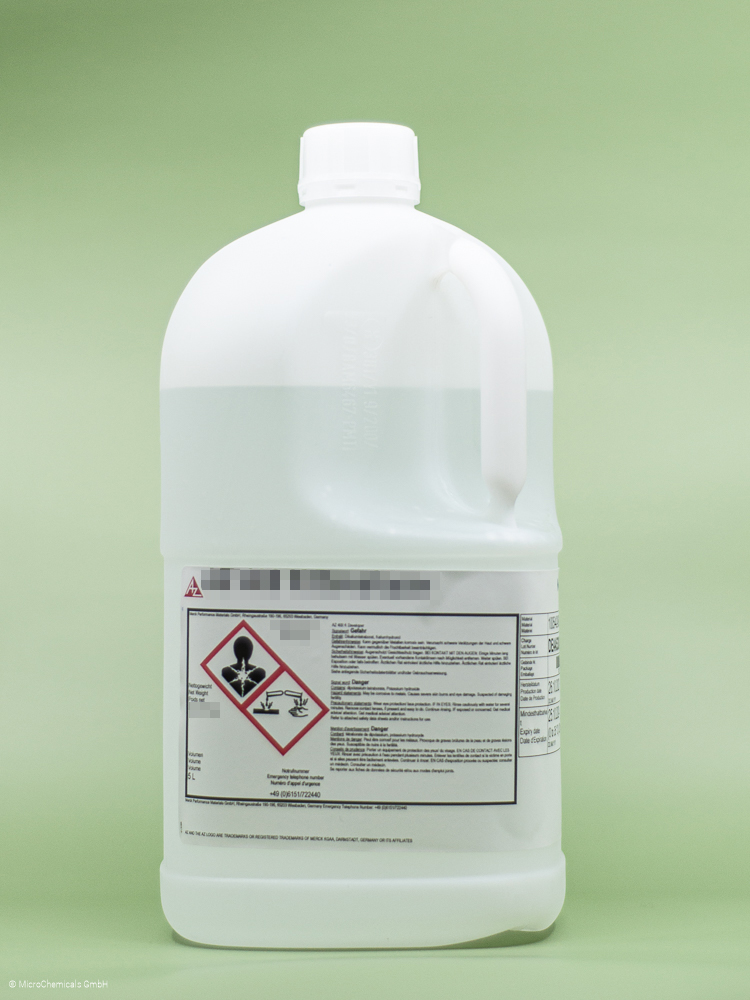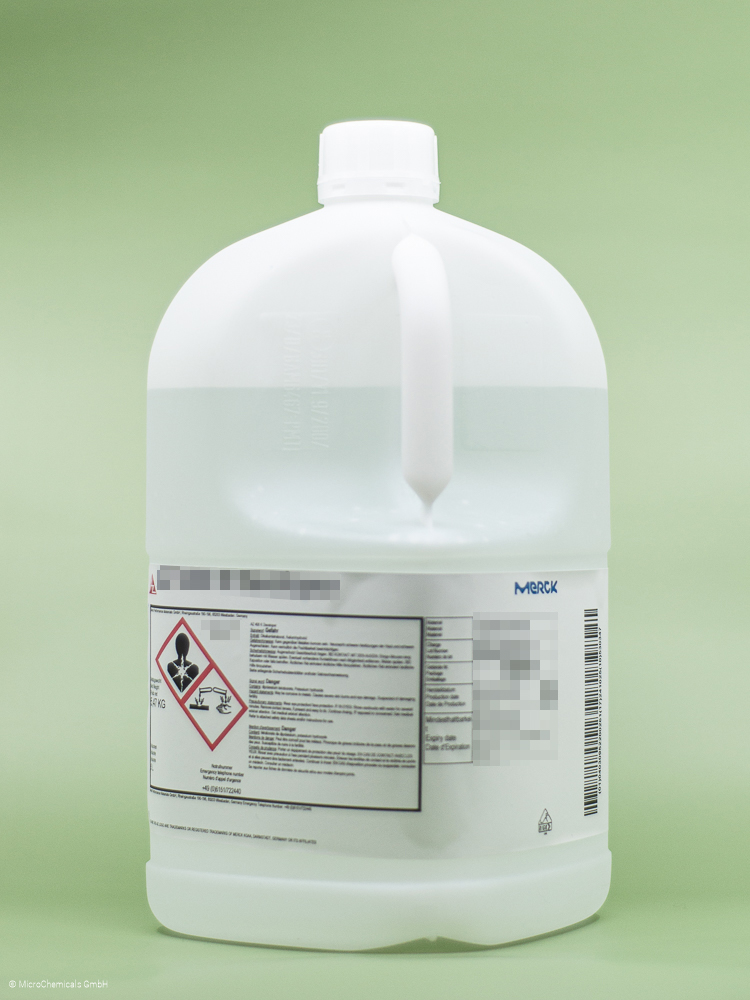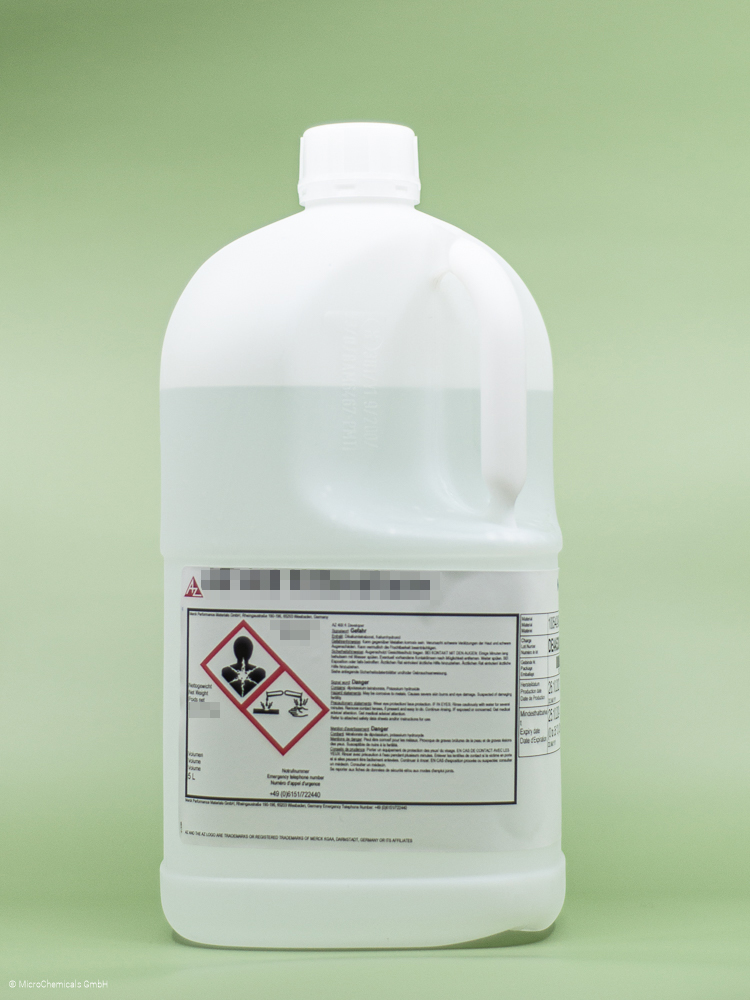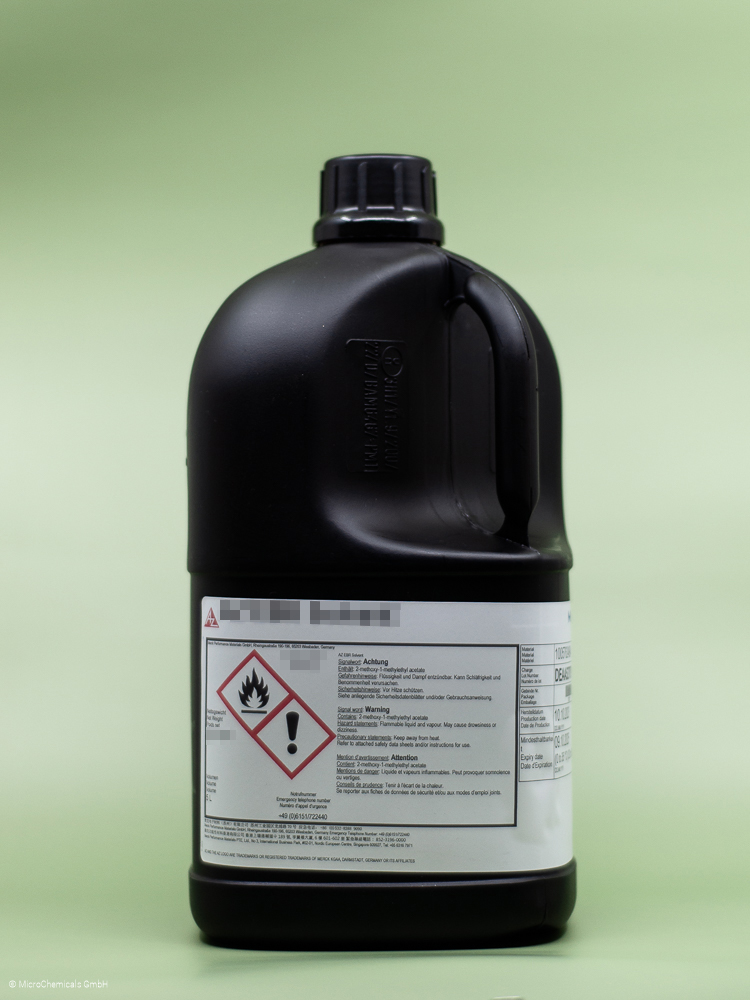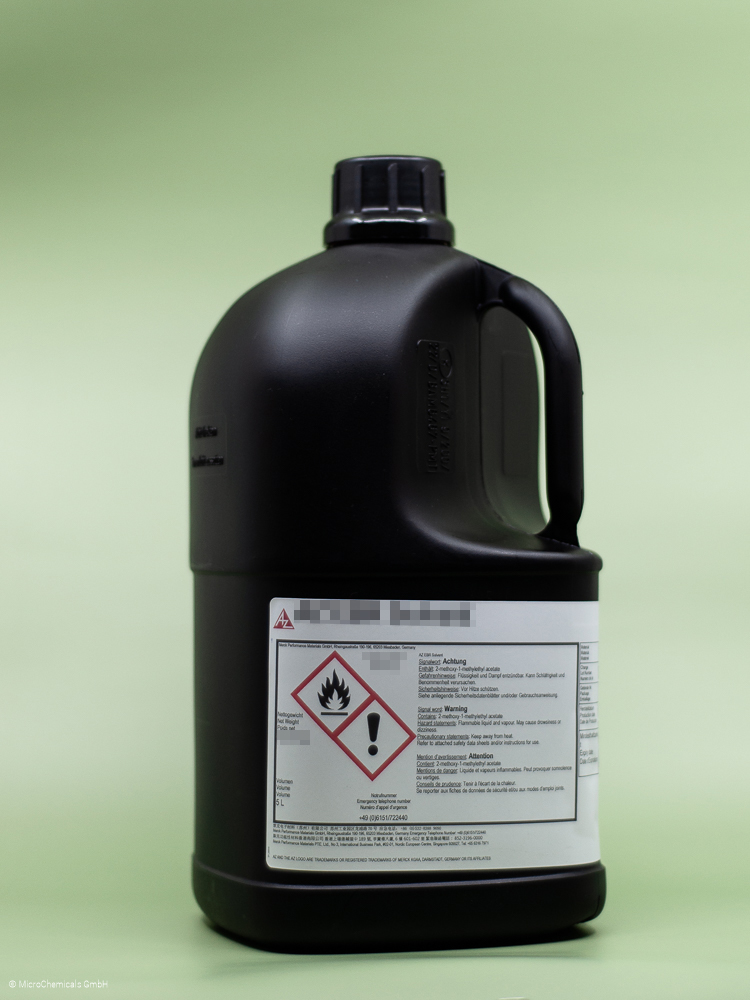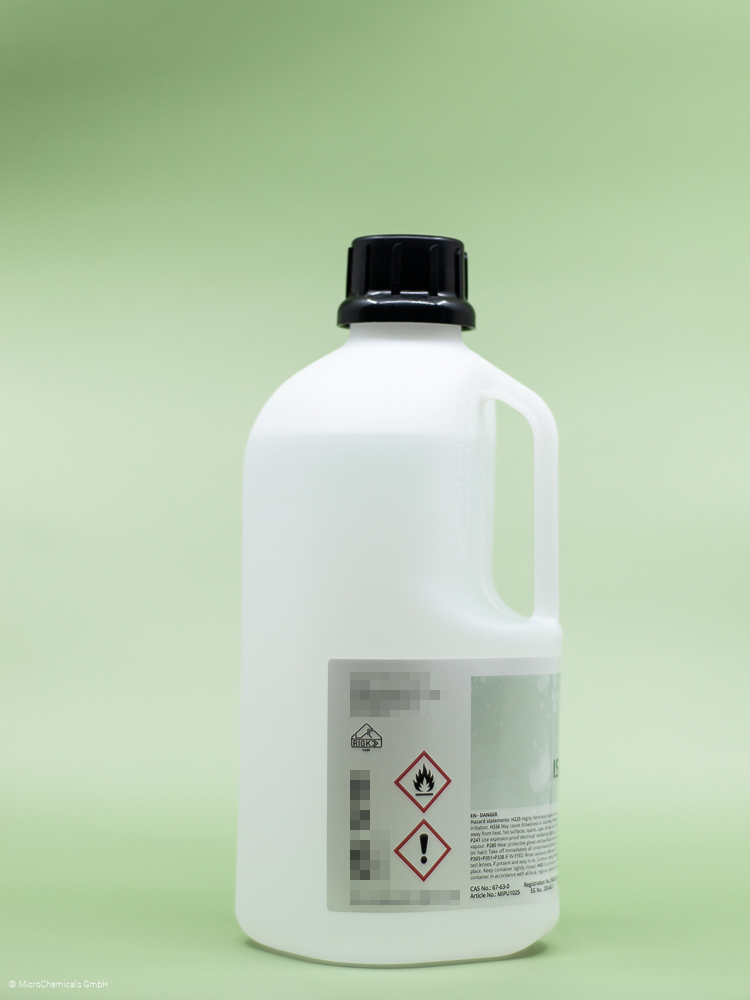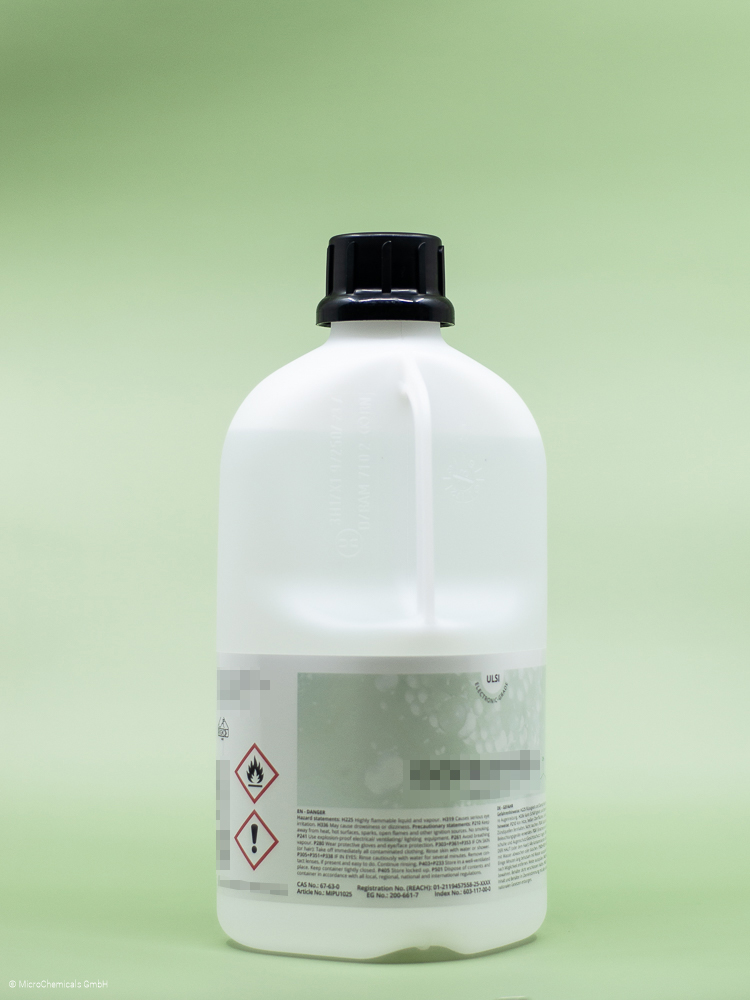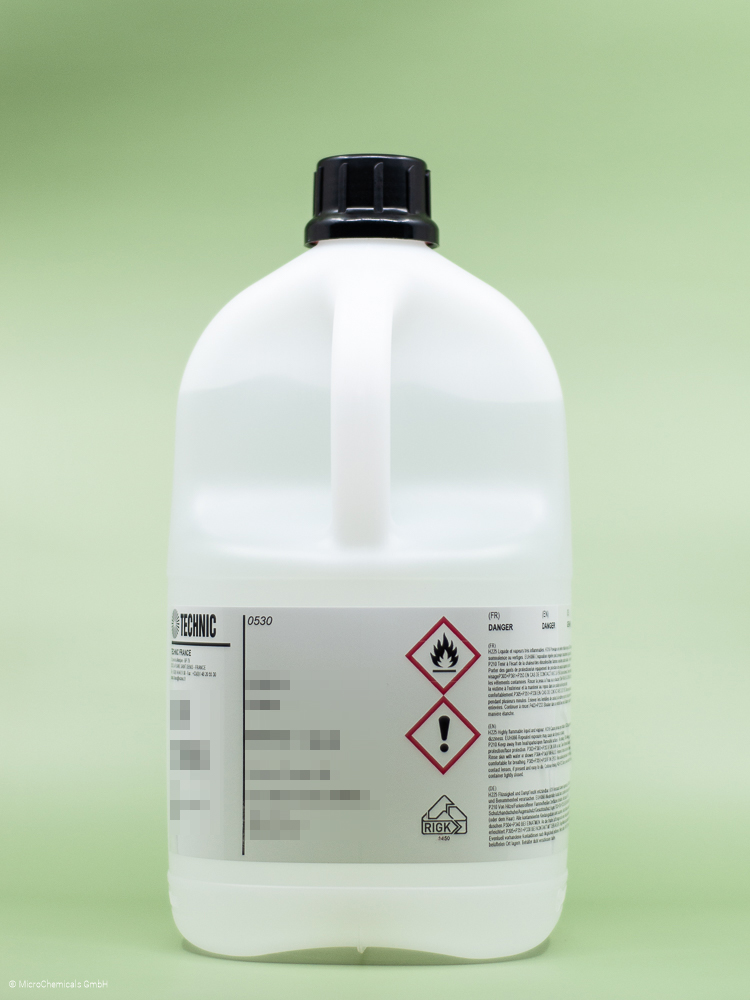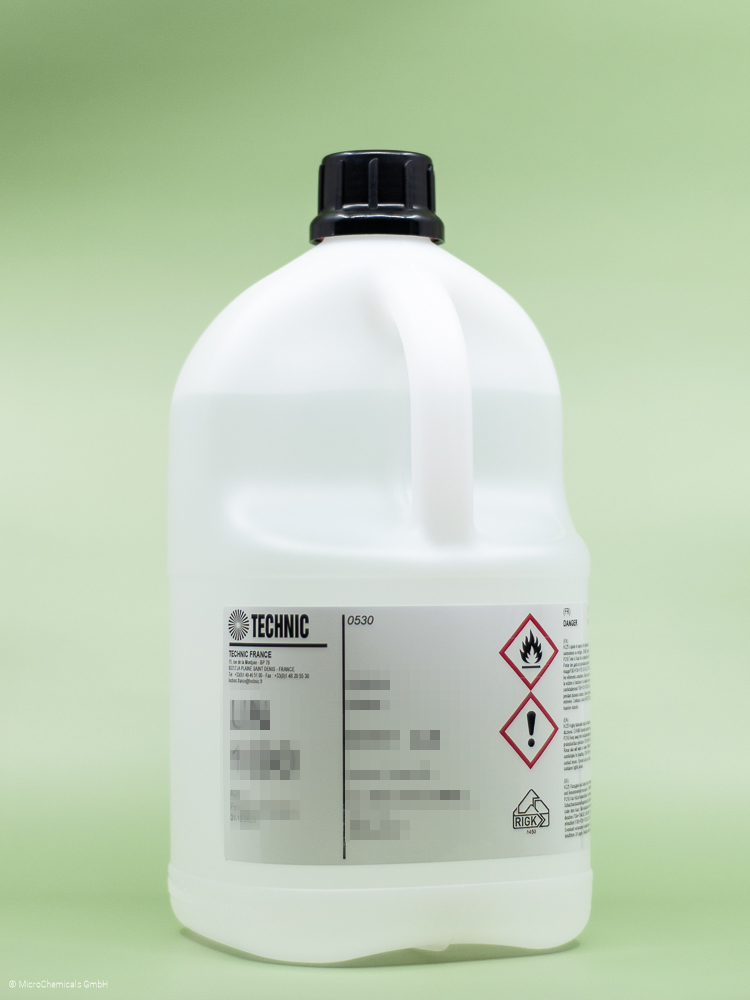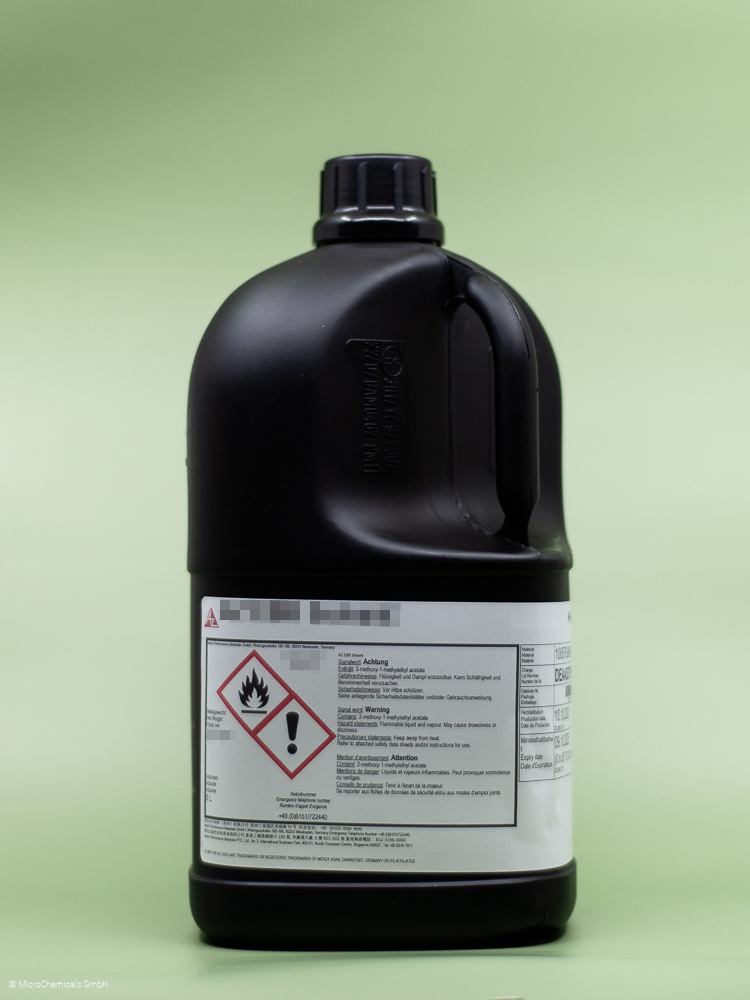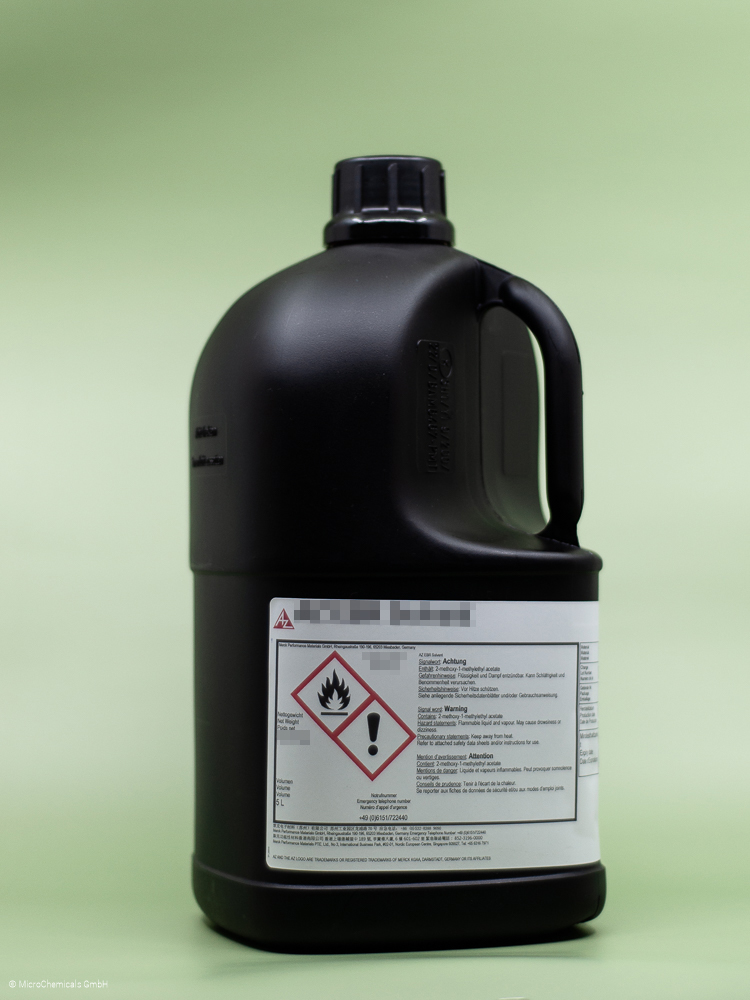TI Spray - 0.25 l
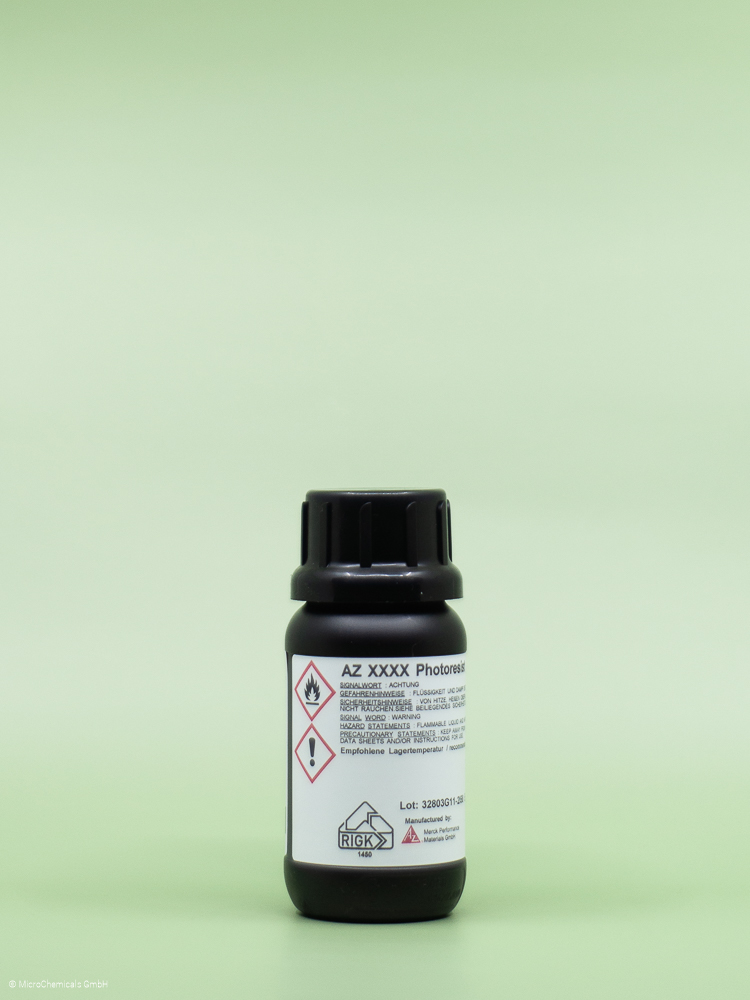
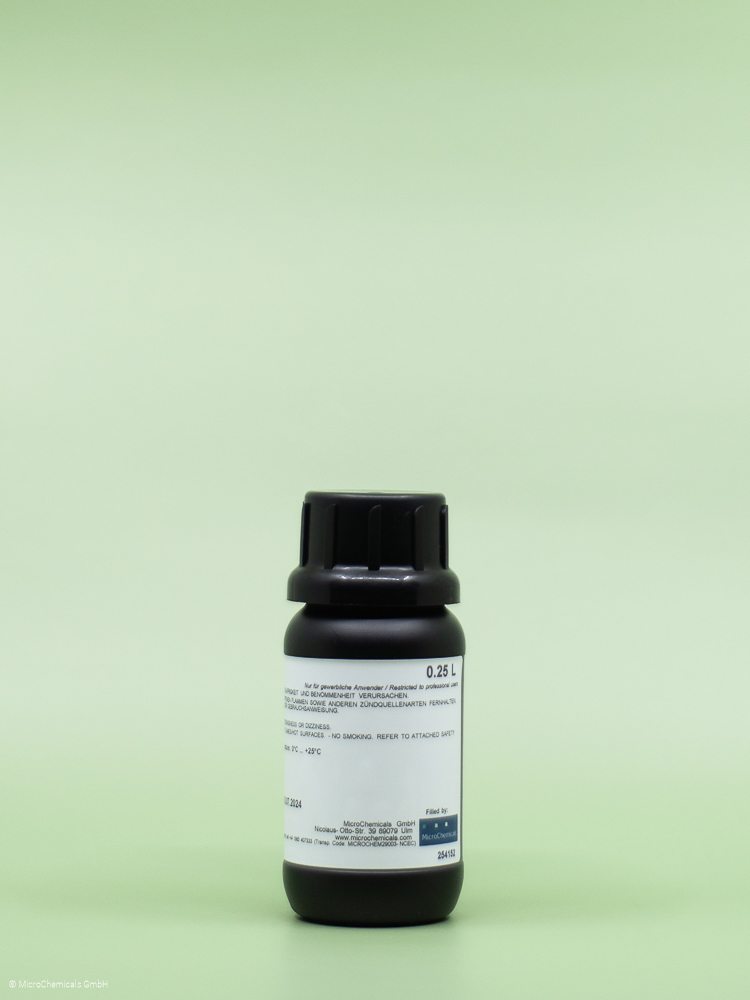






Product information "TI Spray - 0.25 l"
TI Spray
Image Reversal Resist
General Information
TI Spray for 1 - 20 µm Resist Film Thickness (g -, H - and I-line)
TI Spray is a ready-to-use spray resist whose low content of low-boiling solvent allows a smooth resist surface at the expense of a somewhat smaller edge coverage by slow drying of the resist film formed (If edge coverage is of highest importance, the use of AZ® 4999 should be considered as a good alternative).
It can be used in positive or in image-reversal (negative) mode. It can be used for wet chemical etching processes as well as for lift off applications.
Product Properties
- Optimized resist adhesion to all common substrate materials
- Broad process parameter window for stable and reproducible litho-processes
- Compatible with all common strippers (e. g. with AZ® 100 Remover, organic solvents or aqueous alkaline)
- g-, h- and i-line sensitive (approx. 320 - 440 nm)
- Resist film thickness range approx. 1 - 20 µm
- Very smooth resist layers after spray coating on the price of lower edge coverage potential
Developers
If metal ion containing developers can be used, the KOH-based AZ® 400K in a 1:4 dilution (for higher resist film thicknesses 1:3.5 - 1:3 diluted possible) is a suited developer.
If metal ion free developers have to be used, we recommend the TMAH-based AZ® 2026 MIF developer (undiluted).
Removers
For non cross-linked resist films the AZ® 100 Remover, DMSO or other common organic solvents cab be used as stripper. If the resist film is crosslinked (e. g. by high temperature steps > 140°C, during plasma processes such as dry etching, or during ion implantation), we recommend the NMP-free TechniStrip P1316 as remover. AZ® 920 Remover can be a good choice as well, in case of harsh treated, hard to remove resist residuals.
Thinning/ Edge Bead Removal
We recommend for thinning and edge bead removal the products AZ® EBR Solvent or PGMEA.
Further Information
MSDS:
Safety Data Sheet TI Spray english
Sicherheitsdatenblatt TI Spray german
TDS:
Technical Data Sheet TI Spray english
Application Notes:
Further Information about Photoresist Processing
Related products
Developer
Remover
